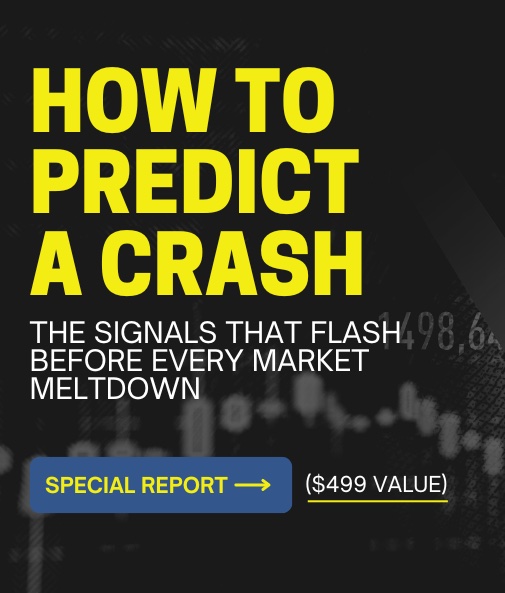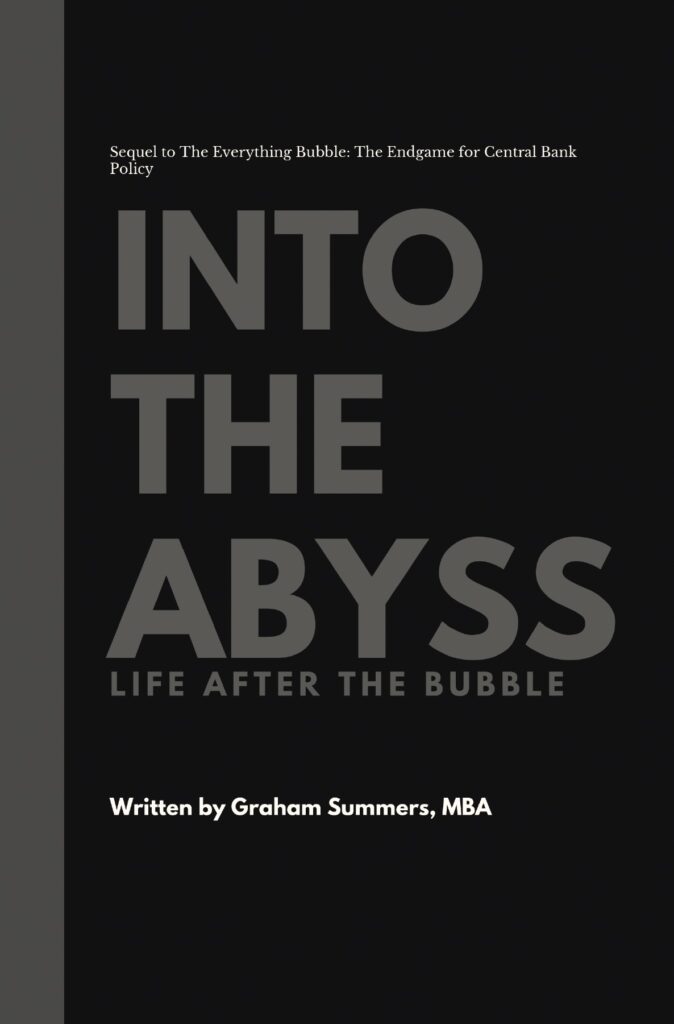Graham’s note: The following is an excerpt from my most recent Private Wealth Advisory newsletter. In it I explain how the Fed’s moves have changed investor appetite for various asset classes. To find out more about Private Wealth Advisory… Click Here!
For much of the 20th century, sovereign bonds, particularly US Treasuries were considered the least risky assets to own. The idea was that while corporations and other entities might default or go bust, the US , which is the largest economy in the world, will always be able to meet its debt obligations by virtue of its economic strength or, at a minimum, printing money to pay back its creditors.
However, when the Great Crisis first erupted with Round One in 2008, the Governments and Central Banks of the world chose two policies to combat debt deflation.
The first was to move private sector debts, particularly toxic mortgage backed assets and derivatives, onto the public or sovereign balance sheets. This was most common in developed countries such as the US, UK, etc.
The second policy that Central Banks and Sovereign Governments chose to enact was printing money/ providing capital injections into their respective economies in an attempt to promote economic growth.
Both of these policies put sovereign balance sheets at risk/ damaged their trustworthiness. The first policy didn’t actually involve dealing with the debts via default or restructuring. Rather, the toxic debts and derivatives were merely moved from the private sector onto the public’s balance sheet. At the same time, the second policy (monetary intervention) ballooned both public debt and fiscal deficits.
As a result of this, the “risk profile” for all asset classes has changed dramatically.
Let me give you an example.
Who do you trust more from an investment perspective: Exxon Mobil or the US?
Historically, the common thought would have been the US. The US offered a better yield and was the largest, strongest economy in the world. Also, Treasuries are backed by the full faith and credit of the US Government, which has a printing press to insure you get your money back in one for or another.
Today, the issue is far more murky. Take a look at the following numbers:
| Exxon Mobil | The US of A | |
| Debt to Market Cap/ GDP | 37% | 100% |
| Earnings/ Receipts to Market Cap/ GDP | 8% | 15% |
| Cash on Hand | $7.8 billion | $73 billion |
| Credit Rating | AAA | AA+ |
| Two year annual yield | 4.8% | 0.31% |
From a balance sheet perspective, Exxon is more attractive with less debt and a higher yield. It also has a higher credit rating and a history of increasing its payout to investors (the company has raised its dividend every year for 26 years).
In contrast, lending money to the US means receiving next to nothing in yield (0.31%). It also means you’re even more likely to see your investment lose money as Treasuries are in a bubble that will end as all bubbles do.
Other issues to consider are that the US is currently running a deficit of $1.5 trillion, sports a Debt to GDP ratio of 100% (300+% when we consider unfunded liabilities). And shows no indication of reining in these policies.
Thus, even by a quick back of the envelope analysis, we find ourselves in an environment in which a single corporation such as Exxon is actually more trustworthy (from an investment perspective) than the US Government.
This represents a complete reversal from the mentality that dominated investing for most of the last 80+ years. During that time, stocks were widely held to be riskier assets while Government bonds were considered safe: investment advisors would urge younger investors to invest heavily in stocks for “growth” while older investors who were closer to retirement were urged to invest in bonds, particularly Government bonds for “income”.
This is why the Greek default is so important for the financial world: if a sovereign nation’s bonds can lose 50% in value in a single day, the entire “risk spectrum” among asset classes has changed dramatically.
Folks, when we’re talking about entire countries going bust, then you KNOW that we’re in for a rough time. The reality is that the powers that be (the Federal Reserve and ECB) are fast losing control of the system. Bernanke’s already admitted he hasn’t got a clue how to solve the financial system’s problems. The Bank of England says we’re facing the greatest financial crisis in history. Even the IMF has warned that we’re heading towards a global financial meltdown.
The reality is that 2008 was just the warm-up. And we’re now heading into the Second Round of the GREAT CRISIS: the Sovereign Default round in which entire countries will go bust. By the time this mess ends, we’re facing systemic failure, bank holidays, debt defaults, and more.
So if you have not already taken steps to prepare for systemic failure, you NEED to do so NOW. We’re literally at most a few months, and very likely just a few weeks from Europe’s banks imploding.
If you’re an individual investor (not a day trader) looking for the means of profiting from the European Crisis, then you NEED to check out my Private Wealth Advisory newsletter.
Private Wealth Advisory is a bi-weekly investment advisory that uses stocks and ETFs to profit from the dominant market trends. Every two weeks I outline what’s REALLY going on behind the scenes in the markets, as well as which investments will profit best from these developments.
Case in point, Private Wealth Advisory subscribers caught the initial market Collapse in August. They’ve also profited beautifully from the ongoing turmoil in Europe as well as the volatility in the US Dollar.
In fact, we just closed out our 16th straight winner yesterday. And we’ve only closed ONE LOSING trade since JUNE!
My clients include executives at many Fortune 500 companies as well as strategists at Morgan Stanley … Merrill Lynch … Wachovia … and the Royal Bank of Scotland … as well as numerous hedge funds.
I’d love for you to join us in profiting from the ongoing market volatility.
To take out an annual subscription to Private Wealth Advisory now… start profiting from the market’s gyrations (again, we’ve only closed ONE LOSING trade since June)…
Best Regards,
Graham Summers




